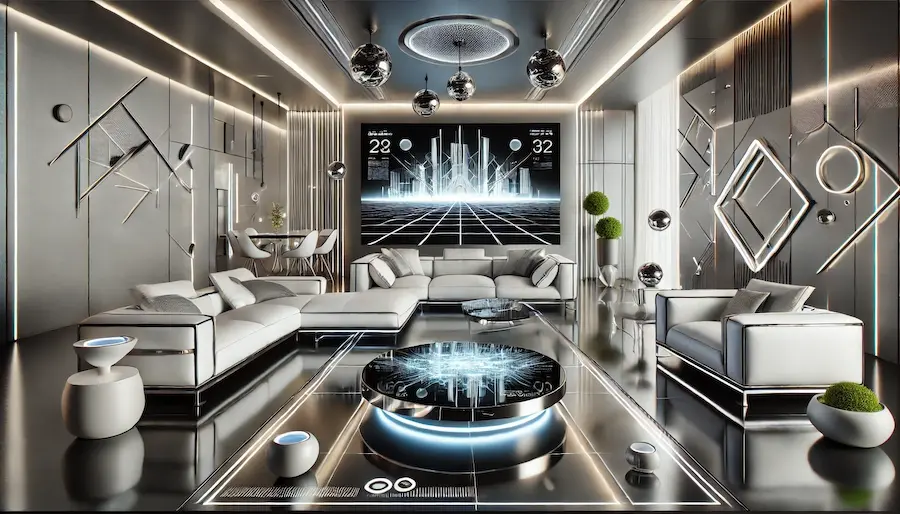A Futurism-inspired living room embodies innovation and forward-thinking design, merging advanced technology with sleek aesthetics to create a space that feels ahead of its time.
History and Origins of Futurism Design
Futurism emerged in the early 20th century as an artistic and social movement that emphasized speed, technology, and modernity. In interior design, this translated to the use of dynamic lines, innovative materials, and a focus on functionality, aiming to break away from traditional forms and embrace the possibilities of the future.
Key Features of a Futurism Living Room
- Clean Lines and Geometric Shapes: Incorporate furniture and architectural elements with sharp angles and streamlined forms to convey a sense of order and modernity.
- Monochromatic and Metallic Color Schemes: Utilize a palette dominated by whites, grays, blacks, and metallics to create a sleek and cohesive look. Accents in bold colors can be introduced sparingly for contrast.
- Innovative Materials: Employ materials such as glass, acrylic, metal, and polished concrete to enhance the futuristic aesthetic. These materials contribute to a sense of sleekness and technological advancement.
- Advanced Technology Integration: Incorporate smart home devices, integrated lighting systems, and cutting-edge entertainment setups to reflect the technological focus of futurism.
- Minimalist Decor: Maintain an uncluttered space with carefully selected furnishings and decor items, emphasizing functionality and form over ornamentation.
Applications of Futurism Design in Living Rooms
- Smart Lighting Solutions: Implement programmable LED lighting that can change color and intensity, allowing for customizable ambiance and highlighting architectural features.
- Modular Furniture: Use adaptable furniture pieces that can be reconfigured to suit different needs, reflecting the flexibility and innovation central to futurism.
- Integrated Technology: Incorporate built-in speakers, hidden charging stations, and seamless connectivity to create a living room that caters to modern technological demands.
Considerations When Designing a Futurism Living Room
- Balance: While embracing futuristic elements, ensure the space remains comfortable and inviting by balancing sleek materials with softer textures and furnishings.
- Functionality: Prioritize practical design solutions that enhance the usability of the space, aligning with the futurist emphasis on functionality.
- Personal Expression: Incorporate elements that reflect your personal style and interests to prevent the space from feeling impersonal or overly sterile.
Conclusion
Designing a Futurism-inspired living room involves creating a space that reflects innovation, technology, and modern aesthetics. By focusing on clean lines, advanced materials, integrated technology, and minimalist decor, you can craft a living room that embodies the essence of futurism while remaining functional and inviting.
